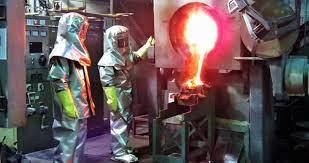
https://unfccc.int/news/action-to-decarbonize-high-emitting-industrial-s...
The industrial sector has immense potential to reduce greenhouse gas emissions, as it currently accounts for around 34 per cent of all emissions. Some 70 per cent of industrial emissions come from hard-to-abate industries - industries in which reducing the greenhouse gas footprint is particularly challenging because they are energy- and carbon-intensive. Decarbonization initiatives in these sectors are therefore crucial to keeping the 1.5°C temperature goal of the Paris Agreement within reach.
The cement, steel, glass and chemicals sectors, along with the heavy-duty transport sector, have so far received limited attention in countries’ national climate action plans (Nationally Determined Contributions, or NDCs). The next round of countries’ NDCs, with a time horizon of 2035, is due to be submitted next year.
Mapping exercise outlines transformative action
The TEC, with support from the Government of Germany and in collaboration with the United Nations Industrial Development Organization, recently conducted a mapping exercise to review transformative climate action initiatives in hard-to-abate industries, including steel, cement, chemicals and petrochemicals.
The exercise sees the integration of renewable energy in electrification as a crucial avenue for decarbonizing industries, along with reduced emissions, heightened energy efficiency and increased productivity and innovation. Examples of already successful action to cut emissions in hard-to-abate industries include:
- The government of Indonesia, in cooperation with Japan, has implemented a technology that captures waste heat generated from furnaces to preheat air. The Regenerative Burner Combustion System results in a remarkable 35% reduction in energy consumption while simultaneously increasing the output of steel by 15%.
- The French company Hoffmann Green has revolutionized the cement industry with innovative technology which enables the production of low-carbon cement, marking a significant shift in low-carbon construction practices. The company has been able to cut carbon dioxide emissions by an impressive 82% compared to traditional methods.
- The Brazilian petrochemical company Braskem S.A. has developed the world’s first bio-based plastic made of sustainably sourced sugarcane used in the packaging of consumer products, included tetra packs for drinks. The company aims at full carbon neutrality of its operations by 2050.
Some specific findings and recommendations from the TEC mapping exercise:
- The UNFCCC Technology Mechanism is pivotal in recommending strategies for establishing linkages between global industry players, technology providers, initiatives, and funding bodies to enhance global cooperation in technology development and deployment.
- To address the variability in green hydrogen and electricity production feasibility, countries with net-zero goals in hard-to-abate industries are advised to explore sourcing resources from other countries, facilitated by international development organizations.
- Expediting the development of standardized Life Cycle Assessments (LCAs) and promoting knowledge exchange among countries on decarbonization technologies are recommended to accelerate global transformation efforts.
- International development organizations are urged to play a role in facilitating financial, technical, and capacity-building support from developed to developing countries to ensure equitable participation in climate action efforts, aligning with UNFCCC and Paris Agreement obligations.
Next steps for international action to tackle industry emissions
Based on the results of the mapping exercise the TEC, with support from the Government of Germany and in partnership with the United Nations Industrial Development Organization, agreed to develop a policy brief and organize a Technology Day focusing on the integration of industrial decarbonization in updated NDCs that countries around the world are preparing this year.
The policy brief will provide concrete policy and technology options to reduce emissions from the steel, cement, chemicals and petrochemicals industries and ways to implement them, including through international cooperation, research, development and demonstration (RD&D) and the use of blended finance to de-risk private sector investment.
And at COP29 in Baku, Azerbaijan, later this year the TEC will host the Technology Day, dedicated to advance the inclusion of hard-to-abate industries in updated NDCs and supporting the implementation of countries' identified climate actions in this area.
UN Climate Change, in collaboration with the COP28 Presidency and Bloomberg Philanthropies, also supports the decarbonization of heavy-emitting industries through the recently launched Industrial Transition Accelerator (ITA).
More information
Updates on the activities of the Technology Mechanism, including both the TEC and the Climate Technology Centre and Network, are available here, and regularly posted in the UN Climate Change Technology Linkedin group. All meeting documents and recordings from the 28th meeting of the TEC are available online. Further information on TEC's transformative industry initiatives and the mapping paper can be found here. The TEC can be contacted through the UNFCCC secretariat at tec(at)unfccc.int.








